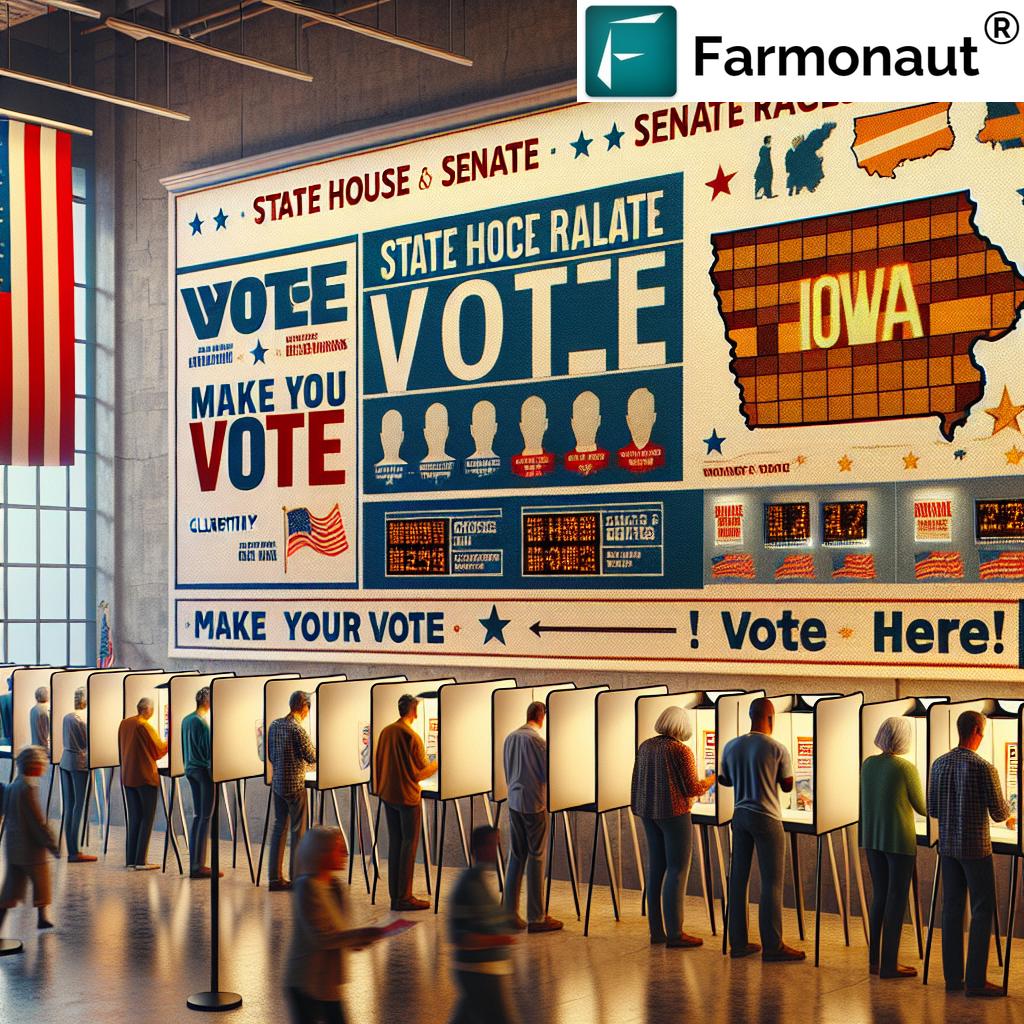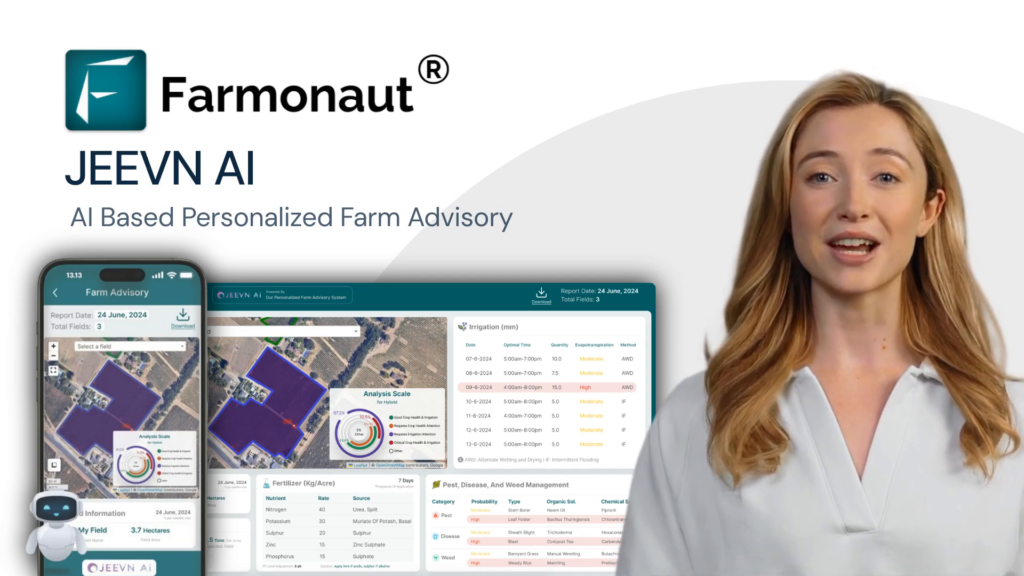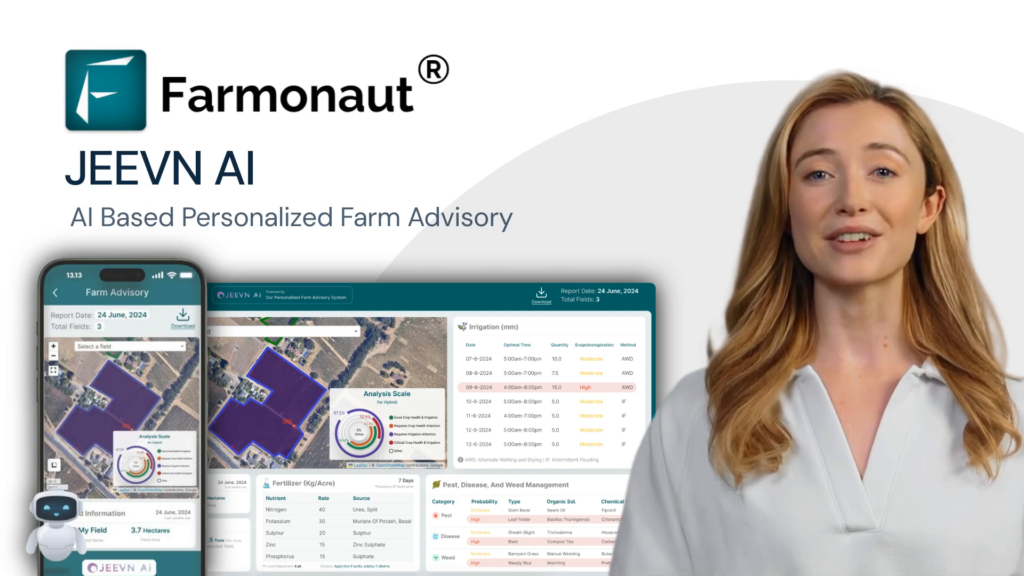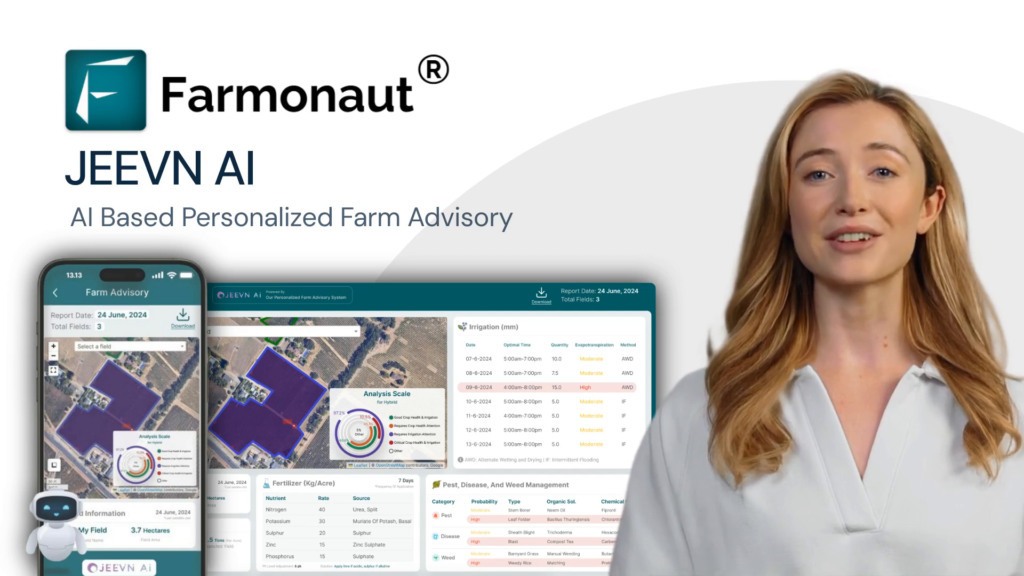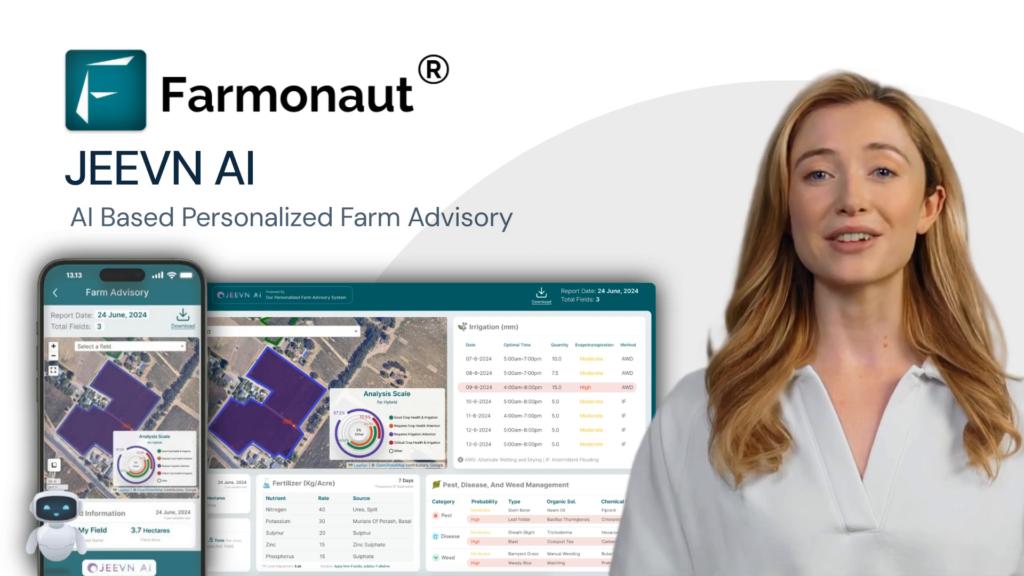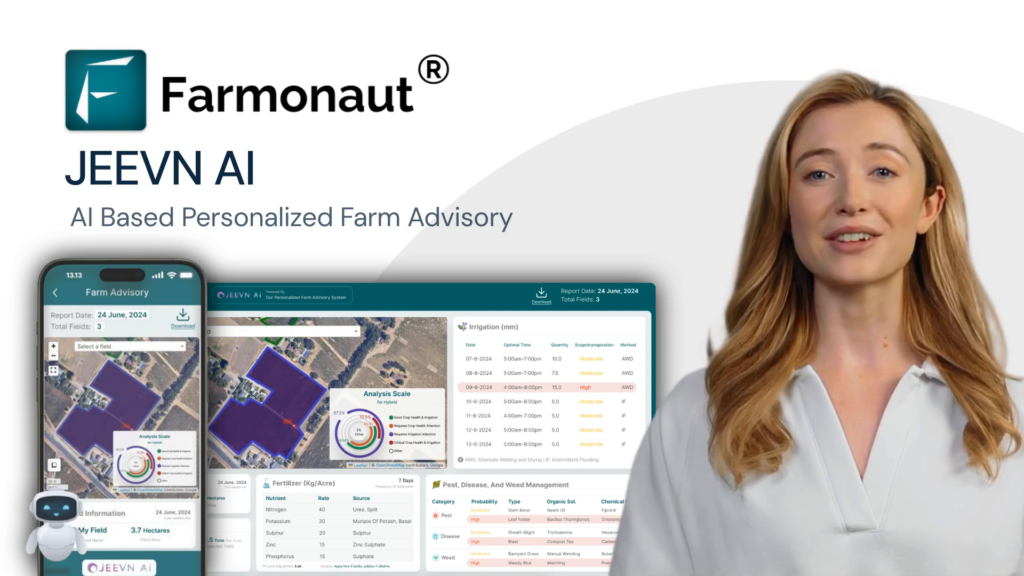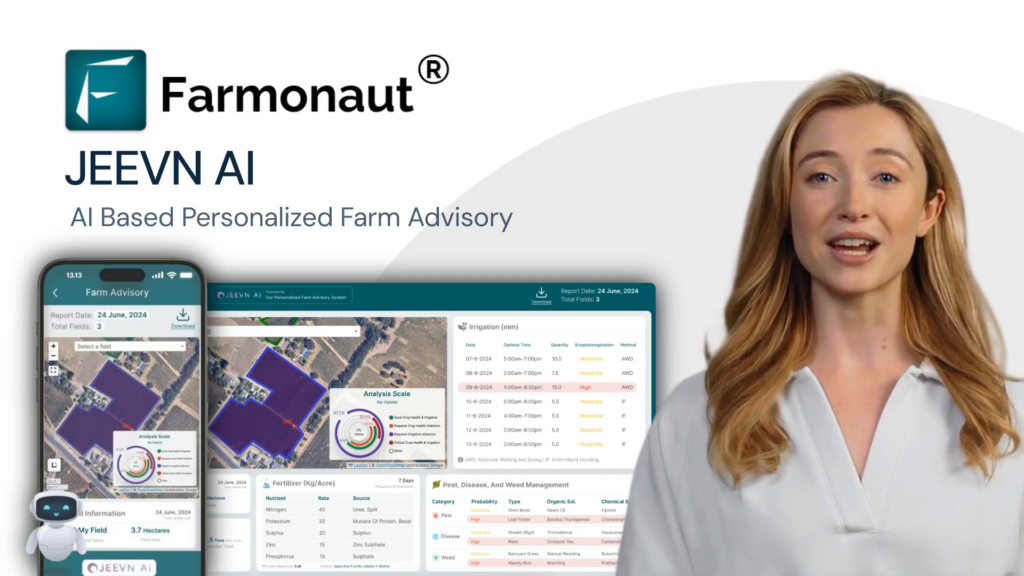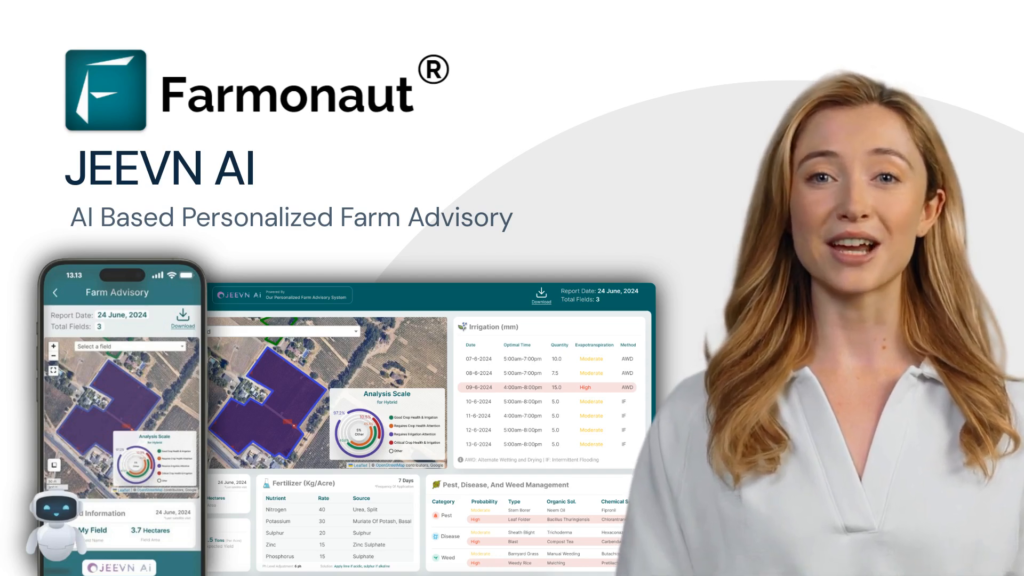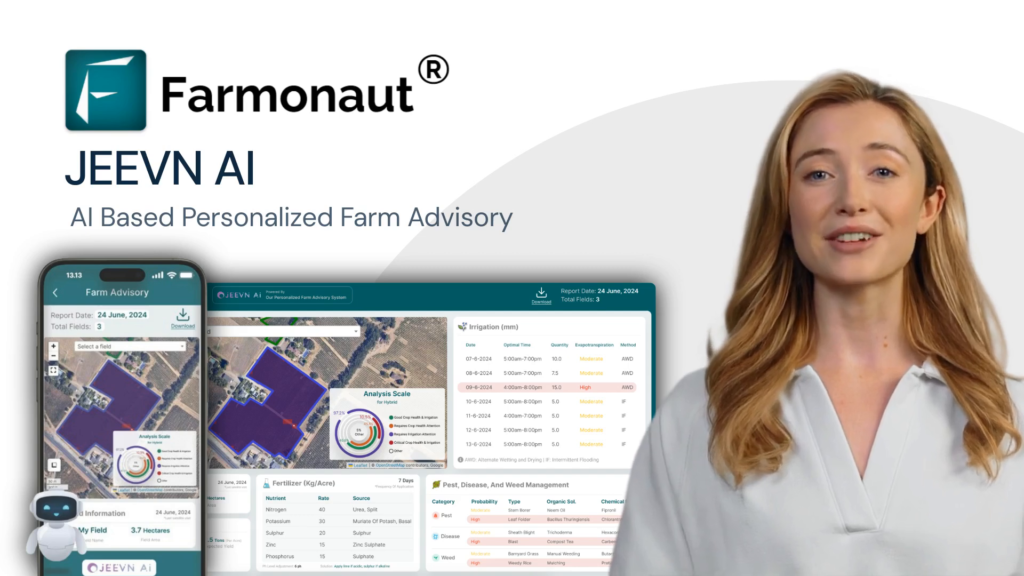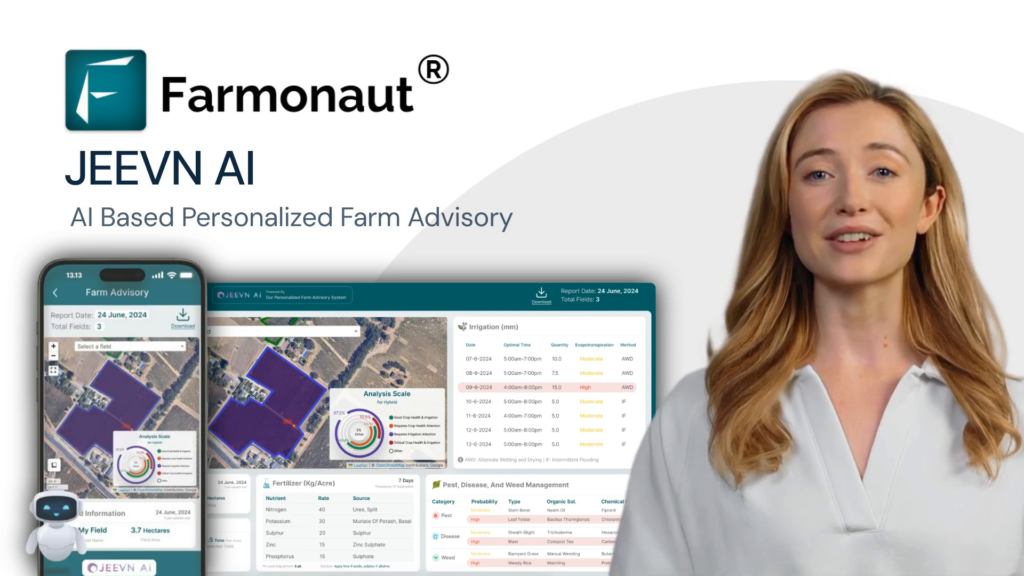Iowa Governor Race 2026: 5 Key Shifts Set to Power Statewide Change
“Iowa’s 2026 open primary could impact control of over 50% of state house and senate seats.”
“Five major political shifts are projected to influence Iowa’s statewide races in the upcoming governor election.”
Table of Contents
- Overview: Iowa Governor Race 2026 & Statewide Political Landscape
- Why 2026 is Different: Open Primary, Reynolds’ Exit & Political Realignment
- 5 Key Shifts Set to Power Statewide Change
- Key Shifts and Projected Impact Table
- Analysis: Projected Outcomes & Control of Iowa Government
- Exploring the Impact: From Des Moines to Waterloo & Cedar Falls
- Supporting Iowa Agriculture in a Shifting Political Era: Farmonaut Technologies
- FAQ: Iowa Governor Race 2026, Statewide Change & Farmonaut
- Conclusion: What’s Next for Iowa?
Overview: Iowa Governor Race 2026 & Statewide Political Landscape
In 2026, the Iowa governor race stands at the heart of a major political transformation. With Governor Kim Reynolds’ announcement that she will not seek another term, Iowa’s political future has been thrown wide open for the first time since 2010. This creates fertile ground for an open primary election in Iowa, sparking massive reshuffling not only for the top job but across statewide political races in Iowa.
The context is pivotal. Iowa’s open seat will produce a cascade of effects: potentially flipping Iowa House and Senate seats, setting off intense primary battles, and giving both major parties fresh opportunities and risks. In a state where political control has typically been stable—Republicans dominating since 2016—the absence of an incumbent allows both Democrats and Republicans to pitch new visions directly to Iowa’s diverse electorate, from Des Moines to Waterloo, Cedar Falls, and beyond.
Throughout this guide, we’ll unpack the latest trends, key shifts, and implications for voters, candidates, and institutions. We aim to provide political clarity amid this dynamic midterm shake-up, all while exploring how agricultural innovation—like solutions from Farmonaut—is supporting Iowa communities through unprecedented change.
Why 2026 is Different: Open Primary, Reynolds’ Exit & Political Realignment
When Kim Reynolds declared on April 11, 2024, that she would step aside at the end of her term, it sent shockwaves through Des Moines and the rest of the state. Reynolds’ nearly decade-long tenure has seen Iowa become an archetype of Republican dominance, with majorities in both the Iowa House and Senate, all statewide offices, and a solidly GOP-oriented federal delegation.
But now, for the first time in sixteen years, Iowa voters will participate in an open governor’s race. Both parties are recalibrating fast, weighing their long-term strategies, grooming candidates, and adjusting to the possibility of competitive races in Iowa.
- No Incumbent Advantage: Elections without an incumbent often see higher primary participation and unpredictable outcomes as party establishments scramble.
- Open Primary Election Iowa: The open field is energizing a new generation of Democratic and Republican hopefuls, with ripple effects for dozens of legislative seats and downstream races.
- Changing Party Strategies: Candidates must now stake out ground not only on economic, education, and agricultural policies but also respond to pressure from national party figures and evolving voter expectations, especially in counties like Waterloo and Cedar Falls.
All these factors are driving statewide political races in Iowa into uncharted territory, with the 2026 midterm now a true test of both parties’ appeal and agility.
5 Key Shifts Set to Power Statewide Change in the Iowa Governor Race
Let’s dive into the five principal shifts projected to shape the 2026 Iowa governor race—each with broad implications for control of Iowa government, statewide political races in Iowa, and the balance of power from the Iowa House and Senate seats to City Hall in Waterloo.
1. The First Truly Open Primary Election in Iowa in Over a Decade
The 2026 contest will be the first genuine open primary election in Iowa since 2010. In Iowa’s electoral history, open governorships have resulted in sharply contested primaries, with both major parties hosting wide fields and sometimes fractious battles for the base.
- Republicans’ Opportunity and Risk: The lack of an incumbent could spark fierce competition among established and outsider candidates, including rumored contenders like Attorney General Brenna Bird, Secretary of Agriculture Mike Naig, and House Speaker Pat Grassley.
- Democrats’ Hopes: Iowa Democratic candidates, observing a rare opening, hope this will energize their base and moderate voters—especially after years of total Republican control. Prominent mentions include State Auditor Rob Sand, who has already announced significant campaign funding.
- Increased Participation: Historically, open primaries encourage higher turnout, bring new issues to the fore, and allow for the possibility of surprise nominees—potentially shifting the shape of the general election.
2. Realignment of Iowa House and Senate Seats
With high-profile politicians potentially vacating their legislative spots to seek the governorship, dozens of Iowa House and Senate seats could become open. This will create competitive local races and disrupt long-lasting political arrangements.
- Direct Impact: If current officeholders such as House Speaker Pat Grassley or Rep. Bobby Kaufmann make a run for governor, their seats could become up for grabs, sparking energetic primary contests and changing the partisan calculus.
- Ripple Effects: Down-ballot, we could see over 50% of the state house and senate in play, impacting not only which party holds majorities but also what kind of legislation gets prioritized.
- Waterloo and Cedar Falls: Communities like Waterloo and Cedar Falls, already hotspots of political activity and stories, are poised to be battlegrounds for these competitive races.
The resulting landscape will likely reshape the way Iowa government is run through the end of the decade.
3. Emerging Political Strategies & Party Dynamics
Political parties are rapidly recalibrating their strategies:
- Republican Calculations: The GOP must weigh whether to back continuity candidates that maintain Reynolds’ “strong conservative leadership” or risk empowering more populist nominees, especially with potential influence from former President Trump.
- Democratic Opportunity: The Democrats will leverage the “open-seat effect,” aiming to position centrist, pragmatic candidates who can reclaim ground in suburban and rural Iowa, targeting places like Des Moines, Waterloo, and Cedar Falls.
- Trump’s Shadow: With Donald Trump’s GOP endorsement record influencing previous gubernatorial primaries, speculation is rife about whether—and when—he’ll weigh in to tip the scales. His past endorsements have significantly reshaped nationwide race outcomes.
- Local Campaign Issues: Local governance, educational future (notably school district matters like those in Waterloo Schools), healthcare, agricultural policies, and fiscal discipline will dominate campaigns, demanding clear and innovative plans from hopefuls.
4. New Faces and Rising Candidates
Absence of an incumbent supercharges recruitment and fundraising on both sides, shaking up previously predictable contests.
- Youth and Legacy: Potential candidates come from seasoned insiders (e.g., Pat Grassley—grandson of Senator Chuck Grassley) and younger leaders building on their families’ legacies.
- Diverse Representation: As the first female governor, Reynolds broke glass ceilings. New candidates may further diversify the field, representing urban, rural, and minority communities more than in years past.
- Fundraising Power: The ability to marshal vast campaign resources is proving decisive—Sand’s $8M warchest puts him in a strong starting position among Democrats.
- Waterloo Political News: Local figures and activists launching campaigns in places like Waterloo are already making state political headlines, further intertwining local and state elections.
5. Influence of National Trends on Iowa’s Local Races
National dynamics are colliding with local realities, shaping Iowa’s midterm elections in ways not seen for years:
- Midterm Dynamics: Historically, midterms favor the opposition party of the sitting president. If the next White House occupant is a Democrat, Republicans may feel a “midterm penalty”—and vice versa.
- Presidential Influence: Trump’s grip over the GOP, especially in Iowa—where he won the 2024 GOP caucuses—means his endorsement could be decisive for down-ballot races, influencing primaries and the general election.
- Rising Issue Salience: Issues like public safety, inflation, school funding (prominently in Waterloo), agricultural technology adoption, and climate adaptation are being shaped by federal and state-level debates.
- Voter Realignment: Increased political polarization, shifting demographic trends, and new voter mobilization efforts by both parties are creating volatile conditions across Des Moines, Waterloo, and Cedar Falls.
“Iowa’s 2026 open primary could impact control of over 50% of state house and senate seats.”
Key Shifts and Projected Impact: Iowa Governor Race 2026
| Key Shift | Estimated Impact (Seats Affected) | Likely Beneficiaries | Trend Direction | Potential Policy Implications |
|---|---|---|---|---|
| Open Primary Election | Governor, 12-18 legislative seats (estimated) | Both parties, new entrants | Neutral | Policy debates on education, agri-tech, healthcare |
| Legislative Seat Turnover | Up to 50% of Iowa House and Senate | Democrats (if anti-incumbent mood grows) | Up (volatility increases) | Changes in school funding, local infrastructure |
| Party Strategy Shifts | Governor + 6-10 key districts | Whichever party best adapts | Up (realignment likely) | Tax/budget reform, agriculture modernization |
| New Candidate Surge | Governor + 5-12 open legislative seats | Fresh faces, women, minorities | Up | Policies on inclusion, digital government, rural development |
| National Trend Influence | All statewide & federal races | Dependent on federal landscape | Neutral/Down (could increase polarization) | Shifts in funding, voter access, environment policy |
Analysis: Projected Outcomes & Control of Iowa Government
Let’s examine how these key shifts may affect the broader structure of control of Iowa government during and after the 2026 midterm election:
- Governor’s Race Unpredictability: With an open field and competitive primaries, both Democrats and Republicans will likely enter the general election with nominees tested by months of intense scrutiny and evolving political alliances.
- Historic Legislative Changes: If turnover truly approaches 50% in the Iowa House and Senate seats, we can anticipate new committee leadership, different budget priorities, and the potential for bipartisan coalitions on core issues affecting schools, healthcare, and agriculture.
- Federal Delegation Iowa: Several competitive federal races mean that Iowa’s voice in Congress could change, especially as the Democratic campaign arm targets 3 of 4 congressional seats considered among the nation’s most competitive races in Iowa.
For voters, this means: fresh ideas, higher stakes (especially for local communities), and expanded opportunities to influence government direction on everything from school district policies to climate-resilient agriculture and rural broadband.
Exploring the Impact: From Des Moines to Waterloo & Cedar Falls
No analysis of Iowa’s midterm elections would be complete without understanding the impact on real communities:
- Des Moines: As the state capital, Des Moines anchors party headquarters, major campaign events, and policy think tanks. The city’s suburban shifts and professional class could become decisive swing votes.
- Waterloo & Cedar Falls: Famous for active civic engagement, labor organizing, and crucial Waterloo Schools and university debates, these areas embody the local impacts of broader statewide political races in Iowa. Grassroots energy here can sway close races and send new faces to the state house and senate.
- Rural Areas: Rural Iowa, with its dependence on agriculture and natural resources, is always at the forefront of state policy. Any realignment in statewide leadership could affect the distribution of grants, disaster relief, and tech-driven solutions to farming challenges.
The dynamic interplay between city and countryside will shape the outcome—and the next chapter—of Iowa’s political future.
How Carbon Footprinting by Farmonaut Supports Iowa’s Policy Makers, Businesses & Farmers
As Iowa’s new administration faces mounting demands for sustainable growth and climate adaption, Farmonaut’s Carbon Footprinting technology becomes an invaluable tool. This solution offers real-time data on farm-level emissions, empowering both businesses and lawmakers to design environmentally responsible policies, track sustainable progress, and respond decisively to regulatory requirements. Accurate carbon tracking is not just a compliance matter—it opens new funding avenues for Iowa’s rural communities and drives responsible resource management statewide.
Farmonaut’s Blockchain-Based Product Traceability for Supply Chain Trust
For Iowa’s food and fiber sector, the Blockchain Product Traceability platform by Farmonaut delivers transparent supply chains—vital in an era of consumer demand for truthful labeling and regulatory clarity. With every stage of the journey secured on the blockchain, Iowa’s producers, processors, and major brands can bolster market confidence and expand into new markets with trust and pedigree.
Fleet Management: Optimizing Agricultural Logistics in Iowa
Rising fuel and labor costs threaten rural profits across Waterloo, Cedar Falls, and the wider state. Farmonaut’s Fleet Management tools offer agricultural business leaders powerful asset tracking, maintenance oversight, and route optimization, decreasing operational expenses and increasing fleet lifespans.
Farmonaut Agro Admin App: Managing Iowa’s Largest Farms with Satellite Data
Scale matters, especially in the contested corn and soybean tracts of central state. The Agro Admin App by Farmonaut turns satellite-driven insight into actionable management for vast farming enterprises, ensuring productivity, sustainability, and rapid adaptation to changing conditions.
Satellite-Verified Crop Loan and Insurance
Access to credit and risk protection is fundamental to Iowa’s prosperity, especially for young and innovative farmers. Farmonaut’s Crop Loan & Insurance solutions use unbiased satellite data to verify farm health, streamlining approvals and minimizing the risks for lenders and policyholders alike. This means faster, fairer access to crucial agricultural financial services as statewide politics evolve.
Supporting Iowa Agriculture in a Shifting Political Era: The Farmonaut Advantage
Amidst political uncertainty and shifting government priorities, Iowa’s agricultural communities—from top-tier businesses to smallholders in Waterloo, Cedar Falls, and Des Moines—must remain resilient and future-ready. That’s where Farmonaut’s advanced technologies step in:
Farmonaut Technologies: Smart, Scalable, Secure
- Satellite Crop Health Monitoring: Harnesses the power of multispectral imagery to deliver timely NDVI and field metrics—fueling smarter decisions about irrigation, planting, and protection.
- Jeevn AI Advisory System: Farmonaut’s AI-powered, real-time crop advice tool delivers customized tips and weather-aware recommendations, driving up farm productivity, reducing uncertainty, and keeping Iowa farmers one step ahead.
- Blockchain Traceability: Unbreakable transparency for Iowa’s food and fiber supply chains, from field to consumer—boosting trust and compliance in a changing regulatory climate.
- Fleet & Resource Management: Optimizes operations for agribusinesses, ensuring the best use of assets and reducing unexpected costs statewide.
- Carbon Footprinting: Provides accountability for emissions, enabling policy-makers, companies, and cooperatives across Iowa to demonstrate leadership on sustainability.
What sets Farmonaut apart is a commitment to affordability and accessibility. Our subscription-based platform, accessible via Android, iOS, and web, brings precision farming—including satellite insights, advisory tools, and blockchain traceability—within reach of every Iowa farmer.
Developers and innovators can integrate Farmonaut’s data directly into their apps and services via our API (see detailed API Documentation).
FAQ: Iowa Governor Race 2026, Statewide Change & Farmonaut
What makes the Iowa Governor Race 2026 unique?
This is the first open primary election in Iowa for governor since 2010. With Governor Reynolds stepping down, no incumbent is running—opening doors for a new class of candidates and raising stakes in statewide political races in Iowa.
How could the race impact the control of Iowa government?
If leading lawmakers pursue the governorship, over 50% of Iowa House and Senate seats could be contested, potentially changing majorities and the legislative agenda for the rest of the decade.
Who are likely candidates for governor?
Possible Republican hopefuls include House Speaker Pat Grassley, Attorney General Brenna Bird, and Secretary of Agriculture Mike Naig. Democrats may rally behind State Auditor Rob Sand or other rising figures.
What statewide trends are influencing the upcoming governor race?
Key trends include the power of open primaries, increasing political engagement in both urban and rural areas (especially Des Moines, Waterloo, and Cedar Falls), shifting party strategies, and the growing salience of national issues in local contests.
How is Farmonaut positioned to support Iowa during this political shift?
Farmonaut provides affordable and scalable satellite intelligence, AI-based advisory, blockchain traceability, and sustainability solutions for farmers, agribusinesses, and government—strengthening the backbone of Iowa’s rural economy as politics evolve.
Conclusion: What’s Next for Iowa?
As the 2026 Iowa governor race approaches, the state stands poised at the intersection of tradition and transformation. An open primary election in Iowa means unpredictable new leaders, fresh policy debates, and unprecedented opportunities for communities from Des Moines to Waterloo and Cedar Falls.
Both Republicans and Democrats see this as their moment to set state priorities and stamp their vision on Iowa’s future—whether by modernizing education, enabling sustainable agriculture, or powering economic revival in every county. For voters, 2026 will not just be another midterm, but a generational vote on control of Iowa government itself.
Amid political upheaval, Farmonaut is proud to provide Iowa’s farmers and growers with technologies that support resilience and growth. By bringing the power of satellite monitoring, AI, and blockchain to the field, we’re empowering rural and urban Iowans alike to thrive—no matter how the political winds shift.
For the most up-to-date insights, tools, and agricultural intelligence in Iowa and beyond, join us on Farmonaut—your partner for the future of farming in a changing world.



